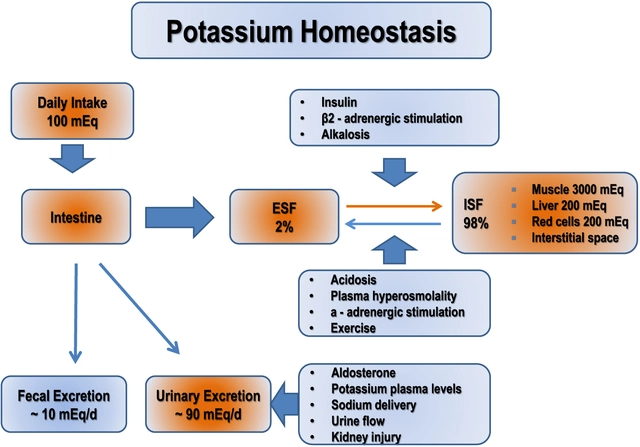
PML Risk Assessment Tool
Personalized PML Risk Calculator
This tool estimates your risk of Progressive Multifocal Leukoencephalopathy based on your treatment history. Results are for informational purposes only and should not replace professional medical advice.
Your PML Risk Assessment
Important Note: This tool provides an estimate only. PML risk depends on many factors including your individual health condition, treatment history, and response to medication. Always follow your doctor's recommendations for monitoring and treatment.
What is Progressive Multifocal Leukoencephalopathy (PML)?
PML is a rare but deadly brain infection caused by the JC virus. Most people carry this virus without knowing - it’s present in 50 to 70% of adults worldwide. Normally, your immune system keeps it locked down. But when you take strong immunosuppressant drugs, your body’s defenses weaken. That’s when the virus wakes up, attacks the white matter of your brain, and destroys the protective coating around nerve cells. This leads to progressive brain damage - and there’s no cure.
PML doesn’t show up overnight. Symptoms creep in slowly: trouble speaking, blurred vision, weakness on one side of the body, loss of coordination, or confusion. These can be mistaken for a multiple sclerosis flare-up or stroke. That’s why early detection is everything. By the time symptoms are obvious, the damage is often severe.
Which Immunosuppressants Carry the Highest PML Risk?
Not all immunosuppressants are equal when it comes to PML risk. Some are far more dangerous than others. The biggest red flag is natalizumab (brand name Tysabri), used for multiple sclerosis and Crohn’s disease. Through 2011, over 100 cases of PML were linked to Tysabri out of more than 82,000 patients treated. That’s a 0.12% overall risk - but it jumps dramatically if you have three things: a positive JC virus antibody test, prior use of other immunosuppressants like azathioprine or methotrexate, and treatment lasting longer than two years.
Here’s how the risk stacks up among common drugs:
- Natalizumab (Tysabri): Up to 4.1 cases per 1,000 patients in high-risk groups
- Rituximab (Rituxan): 0.8 cases per 1,000 patient-years
- Fingolimod (Gilenya): 0.4 cases per 1,000 patient-years
- Dimethyl fumarate (Tecfidera): 0.2 cases per 1,000 patient-years
- Azathioprine: 0.03 cases per 1,000 patient-years
Drugs like interferon beta and glatiramer acetate have never been linked to PML. That’s why many neurologists now recommend them as safer first-line options for MS patients who test positive for JC virus.
How Do Doctors Measure Your Risk?
Testing for the JC virus isn’t just a yes-or-no game. There’s something called the JC virus antibody index, which tells you how much of the virus your body has been exposed to. A low index (below 0.9) means your risk is under 0.1%. But if your index is above 1.5 - especially after two years on natalizumab - your risk jumps to nearly 11%.
That’s why doctors now test your blood every six months if you’re on high-risk drugs. But here’s the catch: 2 to 3% of people with PML had false-negative JC virus tests. That means you could test negative and still be at risk. One Reddit user shared how their PML lesions showed up on an MRI even though their last JC virus test was negative. That’s why MRI scans are just as important as blood tests.

Why MRI Scans Are Non-Negotiable
If you’re on natalizumab, fingolimod, or rituximab, you need a brain MRI every 3 to 6 months. Not every year. Not when you feel bad. Every 3 to 6 months - even if you feel fine.
PML starts as tiny white spots on the brain that look nothing like typical MS lesions. Only trained radiologists can spot the difference. Studies show it takes 15 to 20 hours of specialized training to read these scans accurately. Many community clinics still don’t have staff trained for this. That’s why patients in academic medical centers - where protocols are strict - have better outcomes.
Early detection saves lives. One patient on r/PMLawareness shared that stopping natalizumab at the first sign of lesions - before symptoms appeared - led to a 90% recovery after six months of steroid treatment for IRIS (immune reconstitution inflammatory syndrome). That’s the flip side of PML: when your immune system starts coming back online after stopping the drug, it can attack the infected brain tissue, causing dangerous swelling.
The Hidden Danger: Prior Immunosuppressants
Many patients don’t realize their past medications still matter. If you took methotrexate, azathioprine, or mitoxantrone before starting natalizumab, your PML risk triples. That’s not a small increase - it’s a game-changer. The FDA now requires doctors to ask: “Have you ever taken an immunosuppressant before starting Tysabri?” That question is mandatory.
Patients with a history of multiple immunosuppressants are often switched to lower-risk alternatives. Since 2015, prescriptions for natalizumab have dropped 22% in this group. Ocrelizumab, another monoclonal antibody, has become the go-to choice for those with prior exposure - and so far, no confirmed PML cases linked to it.

What About New Treatments and Hope?
There’s new light at the end of the tunnel. In 2024, a small trial of a T-cell therapy called DIAVIS showed a 68% reduction in death rates among PML patients. Another approach - using immune checkpoint inhibitors like pembrolizumab - helped 27% of patients in early reports. The Cleveland Clinic is also testing maraviroc, an HIV drug, to prevent PML in high-risk natalizumab users.
By 2030, experts predict PML risk from natalizumab could drop to 0.5 cases per 1,000 patient-years. That’s still not zero, but it’s close enough to make the drug a viable option again - if you’re carefully monitored.
What Should You Do If You’re on Immunosuppressants?
- Get tested for JC virus antibodies - and ask for the index value, not just a positive/negative result.
- Ask your doctor: “Have I ever taken another immunosuppressant?” If yes, your risk is higher.
- Get a baseline brain MRI before starting high-risk drugs.
- Stick to a strict 3- to 6-month MRI schedule - no exceptions.
- Report any new neurological symptoms immediately: slurred speech, vision changes, weakness, or balance issues.
- Don’t delay stopping the drug if PML is suspected. Waiting even a few weeks can cost you your mobility or speech.
Many patients live in fear of PML. That’s understandable. But fear shouldn’t stop you from getting the treatment you need - it should make you more proactive. The key is knowing your numbers, sticking to monitoring, and speaking up when something feels off.
Why This Matters More Than You Think
PML isn’t just a rare side effect. It’s a silent killer that hides behind common symptoms. It’s why the global market for PML diagnostics is expected to grow to over $400 million by 2028. Hospitals and insurers are investing heavily because the cost of one missed case - in lost function, long-term care, or death - far outweighs the cost of monitoring.
And it’s not just about MS. People with lymphoma, lupus, or organ transplants on immunosuppressants are also at risk. One study found patients with blood cancers had a 12.7 times higher risk than transplant recipients. If you’re on any drug that suppresses your immune system, you need to know the signs - and demand the right tests.





There are 10 Comments
Jeff Moeller
Tyrone Luton
Herbert Scheffknecht
Sherri Naslund
prasad gali
Paige Basford
Hannah Machiorlete
Jessica Engelhardt
Ankita Sinha
Martin Rodrigue
Write a comment
Your email address will not be published. Required fields are marked *